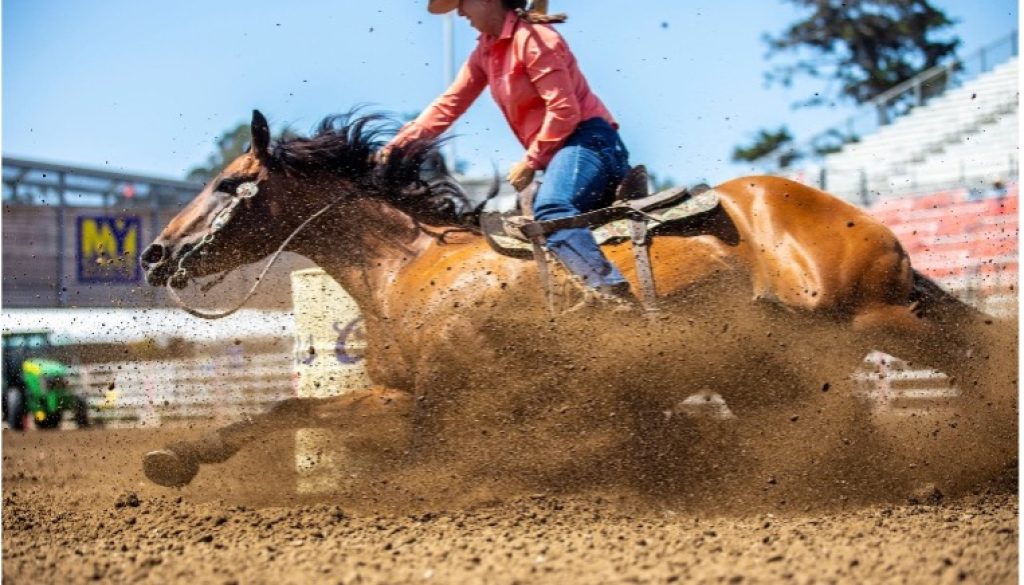In the world of equine nutrition, there exists a quiet yet powerful workhorse: the ration balancer. Don’t get shocked by the price tag – let’s break this down. Often overlooked because of price point, this concentrated vitamin and mineral supplement, fed at 1-2 pounds daily, acts as the essential daily multivitamin for your horse. It’s not a meal replacement, nor a substitute for vital forage, but a targeted tool to bridge the nutritional gaps that even the most carefully chosen primary ration might leave behind. When you look at cost per pound, you might find that choosing a ration balancer will end up with cost savings in the long run while gaining more nutritional coverage in your horse’s diet.
Think of it this way: just as we might take a daily vitamin to ensure our bodies receive a baseline of micronutrients, a ration balancer provides that same foundational support for our equine companions. This makes it an especially astute choice for “easy keepers” – those horses who maintain their weight effortlessly – or for horses thriving on pasture or hay, who may not require additional calories but still need a comprehensive spectrum of vitamins and minerals.Conversely, it’s crucial to understand what a ration balancer isn’t. If your goal is to gain weight or fuel the intense demands of a performance horse, a ration balancer alone won’t deliver the necessary caloric punch. It’s a complement, not a calorie source. That is what makes ration balancers such an excellent choice for our long-eared friends, donkeys, and mules. They are often underfed quality nutrition because they are such easy keepers, however, they still have a nutrient baseline that needs to be met, just like horses.

One common misconception surrounding ration balancers is their seemingly high protein content, sometimes hovering around 30%. However, the key lies in the minuscule feeding rate. At just 1-2 pounds, the actual amount of protein consumed is not substantial enough to cause the often-feared “hot” behavior. In fact, attributing excitability solely to a balancer is a simplification. More often, a horse labeled as “hot” is simply receiving more energy than their lifestyle and workload demand. Horses lacking essential nutrients may appear lethargic. By filling these gaps, we’re not creating a hyperactive horse, but rather allowing them to feel their best, with the energy to thrive. It’s a crucial distinction: fueling well-being versus overfeeding energy. Similarly, while ration balancers may not be low NSC, the feed rate is so small that they can typically be worked into a diet successfully when considering the meal’s full NSC content. Consult with a professional when designing a low NSC diet, as it is not simply about keeping NSC levels below 10-12% in the total diet.

Let’s go shopping! Feed stores offer a diverse array of ration balancers, each with its unique formulation and added benefits. This is where informed consumer choice comes into play. Do you prefer a straightforward, foundational balancer that allows you to add additional individual supplements? Or does an “all-in-one” option, perhaps containing biotin for hoof health or gut-supportive ingredients, better suit your needs and preferences? Take a look at the feed tag and see if the product you are looking at contains what you want. You can also source the feed spec sheet online on the manufacturer’s website for a better breakdown of the feed nutritional value. Be sure that you are noting units of measure when comparing one brand to another. One may be listed as “ppm” while another is in “mg,” and that can be deceiving when you are trying to determine what the product is contributing to the diet. Be on the lookout for “tag dressing” or fancy marketing. For example, if a feed says it contains biotin, notice how much is listed. The recommended amount of biotin a horse should be supplemented per day is 15-20 mg. If the balancer only contains 1 mg per pound, you are not meeting the suggested supplementation level.
Beyond their nutritional profile, ration balancers offer significant practical advantages for barn owners, managers, and trainers. Many horses can maintain optimal health and condition on just a balancer alone, simplifying feeding routines and potentially reducing time spent and feed costs. For horses with higher energy demands, a balancer provides an excellent nutritional foundation to build up with performance or complete feeds. This strategic approach not only saves time for those doing the feeding but also elevates the overall quality and precision of your equine nutrition program.
In conclusion, the ration balancer stands as a testament to the power of targeted nutrition. It’s a small addition with the potential for significant impact, ensuring your horse receives the essential vitamins and minerals they need to thrive, regardless of their workload or metabolic tendencies. By understanding its role and benefits, we can move beyond simply feeding and truly nourish our equine partners from the inside out.
If you are looking for a comprehensive ration balancer, consider the new Stable MAX Ultra Mate from Elk Grove Milling, Inc. Stable MAX™ Ultra Mate features the LifeFORCE Formula from Alltech. Backed by science, this balancer targets gut health and immune support, promotes healthy skin, coat, hoof integrity, connective tissue, reproductive function, and promotes feed efficiency. Enhancing overall health and performance, allowing your horse to thrive to its natural potential. Check at a local feed store near you and request Stable MAX feeds for your horse.




